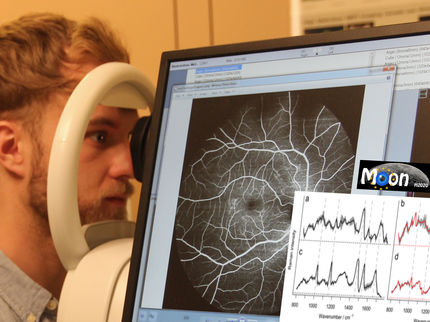New model system for the development of potential active substances used in condensate modifying drugs
Model system can break down fibrils into their constituent single units or liquid droplets for the first time
The origin of many diseases such as Alzheimer's or Parkinson's can be found at the molecular level in our body, in other words, in proteins. In a healthy system, these proteins are responsible for numerous physiological functions. In order to carry out certain tasks, they may also assemble in groups consisting of numerous proteins. Once that job is done, they split up again and go their own ways. However, if larger clusters of a hundred or more proteins form so-called fibrils, which are bundles of long, filament-like accumulations of proteins, the attraction between the proteins is so strong that they can no longer separate from each other. The resultant plaques can induce a wide variety of disorders. If the fibrils accumulate in the brain, for instance, they can increase intracranial pressure, thus triggering neurodegenerative diseases.
Disintegration of fibrils achieved for the first time
The formation of fibrils is generally an irreversible process, both in the human body and in synthetic systems. Professor Shikha Dhiman of Johannes Gutenberg University Mainz (JGU) in Germany and Professor Lu Su of Leiden University in the Netherlands have recently succeeded in creating a model system in which fibrils can be broken down into their individual components or liquid droplets. The project also involved two Ph.D. students, Mohit Kumar in Mainz and Heleen Duijs in Leiden. "This is the first model system in which we have succeeded in reversing this process without any chemical reaction," reported Dhiman.
Within fibrils, non-covalent bonds – such as hydrogen bridges – link the single units together. These are not particularly robust on their own, but it is the high number of bonds and their order that gives fibrils their superior stability. The researchers thus decided to use a bit of trick: They added substances that embed themselves in fibrils creating pocket-like formations that make the fibril structure unstable. "What we are in effect doing is introducing competing binding partners. These form bonds with single units, the interaction between units become redundant, and the fibrils begin to disintegrate", explained Dhiman.
Model system allows for systematic investigations
A particularly interesting feature of the model system is that it allows all parameters that can be modified to be systematically studied one by one. Until recently, researchers had assumed that individual proteins come together to form fibrils. Recently, however, this concept has been disproved. Rather, several proteins accumulate together with water and salts resulting in liquid droplets, with the proteins arranging themselves on the surface of these droplets. This is a significant intermediate state in the actual formation of fibrils. In contrast with fibrils, these droplets can undertake normal functions in the body and can even break up to release the proteins again. "Our model system has been able to map all three states, namely individual single units, liquid droplets, and fibrils," explained Shikha Dhiman, Professor at the JGU Department of Chemistry and senior researcher in the CoM2Life research network, with which JGU is applying for funding as a Cluster of Excellence in the German national Excellence Strategy competition. CoM2Life is the abbreviation for "Communicating Biomaterials: Convergence Center for Life-Like Soft Materials and Biological Systems".
Fundamental basis for the development of innovative therapies
In the long term, the model system will support the development of drugs to treat a range of disorders, particularly neurodegenerative diseases such as Alzheimer's and Parkinson's. Unlike in complex systems such as cells, all parameters of the model system can be readily explored to answer various questions: What causes protein droplets to clump together to form fibrils? How can this process be regulated? How can fibrils be broken down into short fibers? Once the researchers have resolved these fundamental issues, they can investigate the cellular level – based on large-scale screening of active substances. "The potential in terms of therapeutic applications is enormous," emphasized Lu Su, Assistant Professor at the Leiden Academic Centre for Drug Research. "We expect that drugs developed on the basis of this model will be used for the targeted disintegration of pathological fibrils to alleviate symptoms and improve outcomes for patients."

























































